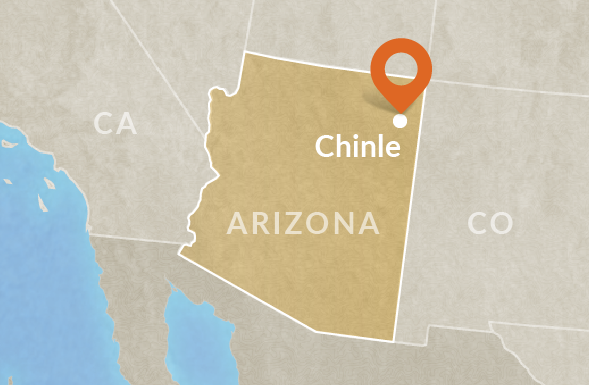Building and Supporting Great School Principals and Leaders

Principals influence student achievement through their influence on classroom instruction, organizational conditions, community support, and setting the teaching and learning conditions in schools. Explore what our researchers are learning about leading schools and how they are applying that learning to improve state policy, district programs, and school practices aimed at developing and retaining effective leaders.
Professional Development and Preparation
The Leaders We Need Now Study
As the nation begins to recover from grips of the pandemic, educational leaders are considering how the principalship has changed and how principal support must change to better address the whole child and the inequities affecting students and communities. The National Association of Elementary School Principals and AIR have launched the Leaders We Need Now study to examine how principals’ work has changed—and needs to shift—in 2021 and beyond.
In Conversation: Insights on U.S. Teachers and Principals from an International Survey
How does the U.S. education workforce compare to other countries in terms of demographics, attitudes, and beliefs? Do they spend more time on instruction and other tasks than international educators? AIR Principal Researchers Matthew Clifford, Ebru Erberber, and Lisa Lachlan discuss TALIS 2018 key findings and policy and practice implications from a U.S. perspective. View the infographic >>
 Building Leadership Skills to Strengthen Schools in Chinle, Arizona
Building Leadership Skills to Strengthen Schools in Chinle, Arizona
The Chinle Unified School District faced both leadership challenges and teacher retention problems prior to the 2016-2017 school year. In fall 2017, AIR began providing competency-based turnaround leadership coaching, focusing on the patterns of thinking, feeling, acting, or speaking that cause a principal to be successful.
Teacher Leadership Toolkit 2.0: Strategies to Build, Support, and Sustain Teacher Leadership Opportunities
The Teacher Leadership Toolkit 2.0 includes a synthesis of research on teacher leadership, current examples, and useful tools for designing, implementing, and supporting teacher leadership initiatives.
Principal Professional Development: New Opportunities for a Renewed State Focus (Policy Brief)
Too often, states and districts focus on teachers rather than principals when planning for professional supports. This brief offers an easy to digest overview of current school leadership research, and highlights helpful state policy examples.
Evaluating Principal Preparation Programs
The George W. Bush Institute and AIR collaborated on a two-year study that looks at effective ways to evaluate principal preparation and describe policies to get, support, and keep great principals. The resulting policy paper, Developing Leaders: The Importance—and the Challenges—of Evaluating Principal Preparation Programs, and research analysis, Following the Leaders: An Analysis of Graduate Effectiveness from Five Principal Preparation Programs, highlight the link between principal preparation programs and student outcomes in five large districts across the United States.
 Leadership Coaching for School Improvement (Video)
Leadership Coaching for School Improvement (Video)
By increasing the capacity and stability of leaders and teachers, low-performing schools may improve student performance and increase graduation rates. This video explores a leadership coaching program that has produced considerable improvements at an Illinois high school.
Performance Evaluation
The Impact of Providing Performance Feedback to Teachers and Principals (Report)
Educator performance evaluation systems are a potential tool for improving student achievement by increasing the effectiveness of the educator workforce. This report is based on a study on the implementation of teacher and principal performance measures highlighted by recent research, as well as the impact of providing feedback based on these measures.
National School Leadership Standards Map (Online Tool)
This interactive map from the Center on Great Teachers and Leaders helps state education agency staff, researchers, and practitioners quickly and easily locate information on standards for school leaders and supervisors of school leaders, as well as evaluation and preparation policies for school leaders in all 50 states.
 Building Leadership Talent Through Performance Evaluation (Brief)
Building Leadership Talent Through Performance Evaluation (Brief)
Principals’ roles have expanded significantly over the past decade, and many feel unprepared to meet the new demands of their jobs. The Five Essential Practices of School Leadership framework was developed to evaluate principals and help school leaders achieve their goals. For more about the framework, see Principal Observation Tool Strengthens School District Leadership.
The Utility of Teacher and Student Surveys in Principal Evaluations: An Empirical Investigation (Report)
This study examined the principal's role for their contributions to student achievement, and found that student and teacher survey measures can have utility for principal performance evaluation.
State and District Policy
State Policies on Principal Evaluation: Trends in a Changing Landscape (Brief)
The recent wave of education reform initiatives has resulted in new principal evaluation legislation in the past few years. This Policy-to-Practice Brief describes the trends in recently passed principal evaluation legislation, with a focus on implementation timelines and pilot programs.
Practical Guide to Designing Comprehensive Principal Evaluation Systems (Online Tool)
This interactive guide provides resources and guidance for designing comprehensive evaluation systems that identify effective principals and support schools to improve instructional leadership. PDF Version
What Districts Know—and Need to Know—About Their Principals (Brief)
Despite its potential to inform district decision-making, high-quality data about principal preparation, experience, and assignment are rarely available within districts. This brief describes the importance of improving the accuracy and availability of these data to explore questions about how to find, support, and keep the best leaders.